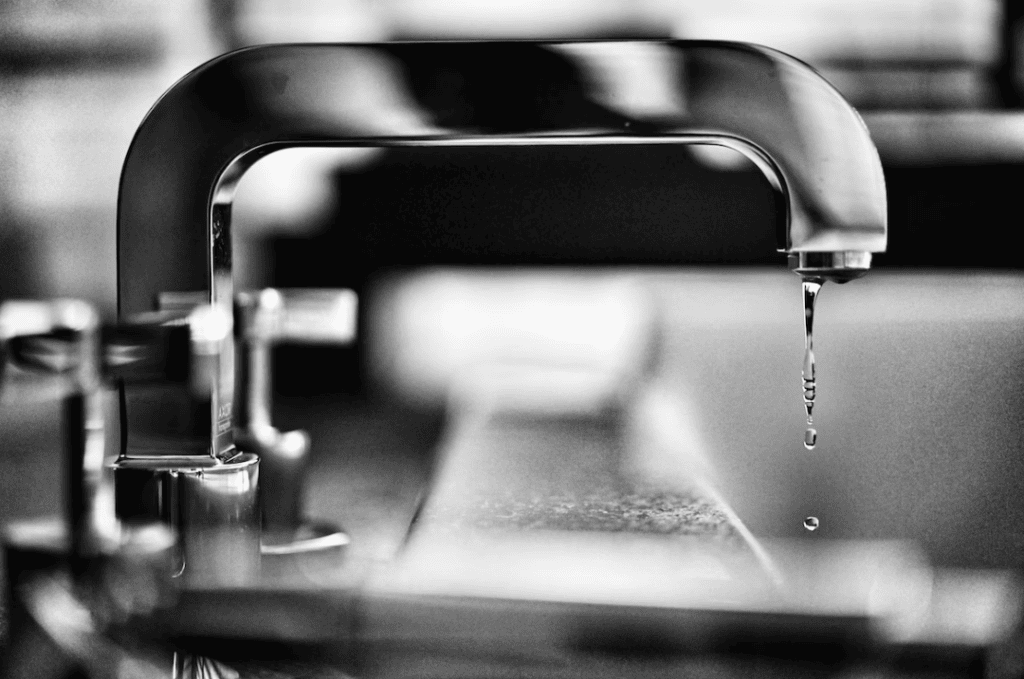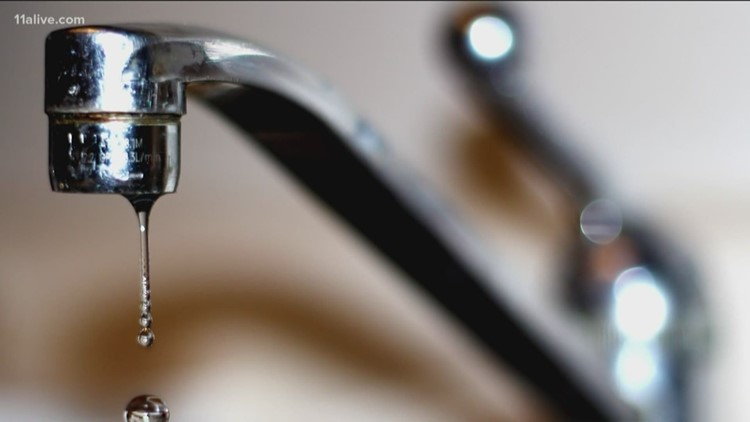Discovering the Outcomes of Constant Damaged
Discovering the Outcomes of Constant Damaged
Blog Article
Right here further down you can get a lot of worthwhile material around The Environmental Impact of Leaky Faucets.

Introduction
A dripping faucet could appear like a small inconvenience, yet its repercussions extend much beyond the periodic drip. Comprehending the effects of a leaking tap is crucial for both home owners and the atmosphere. In this post, we'll check out the various impacts of this usual family concern and why resolving it promptly is important.
Reasons For Leaky Faucets
Leaking taps can arise from a selection of aspects, consisting of deterioration, high water stress, and rust. Gradually, the continuous use of faucets can lead to damaged seals and gaskets, creating leakages to create. Furthermore, excessive water pressure can place stress on plumbing fixtures, leading to leakages. Rust and rust can additionally damage faucet components, making them susceptible to leakage.
Water Wastefulness
One of one of the most considerable consequences of a leaking faucet is water wastefulness. Even a little drip can add up to gallons of drainage over time. This not just drives up water expenses yet likewise adds to water scarcity and environmental destruction. Dealing with dripping taps promptly is important for saving this valuable source and minimizing its impact on the planet.
Financial Impact
In addition to wasting water, leaky faucets can also have a significant financial influence. Raised water costs are a straight repercussion of water waste, costing property owners thousands of bucks every year. Additionally, the cost of fixing water damage brought on by leakages can be considerable, especially if left neglected for a prolonged duration.
Ecological Impact
The environmental effect of leaky taps prolongs past water wastefulness. By preserving water, home owners can contribute to more comprehensive efforts to alleviate water scarcity and shield natural communities. Lasting options such as rain harvesting and water-efficient fixtures can better minimize the ecological impact of house water use.
Technical Solutions
Innovations in technology have caused the growth of clever taps and water-saving devices that help decrease water wastefulness. Smart taps make use of sensors to spot activity and readjust water circulation as necessary, reducing waste without sacrificing ease. Water-saving tools such as aerators and low-flow showerheads are likewise efficient in saving water without jeopardizing performance.
International Viewpoints
While dripping faucets may look like a localized concern, they add to wider worldwide challenges such as water deficiency and climate change. In areas currently facing water stress, every decrease counts, making leakage avoidance and repair work vital. By taking on water-saving practices and investing in sustainable technologies, house owners can play their part in dealing with these pushing worldwide concerns.
Regulative Procedures
Federal government regulations play a vital duty in reducing the influence of leaking taps and advertising water conservation. From building codes that require water-efficient fixtures to water-saving incentives and rebates, policymakers have a range of tools at their disposal. By implementing and applying these guidelines, governments can make certain that house owners prioritize water preservation in their daily lives.
Area Effect
Addressing dripping faucets calls for cumulative efforts at the area degree. By raising recognition regarding the importance of water conservation and giving resources for leak discovery and repair work, regional authorities can encourage homeowners to act. Campaigns such as water-saving rebate programs and leak detection campaigns can incentivize behavior change and promote accountable water use.
Instance Researches
Real-life instances of the effect of dripping taps emphasize the relevance of aggressive upkeep and prompt repair work. From water damages to escalating water costs, the repercussions of ignoring leakages can be severe. By sharing these study, homeowners can better recognize the significance of addressing leaky taps immediately.
Educational Campaigns
Educational campaigns play an important function in raising understanding about the impacts of leaky taps and promoting water conservation methods. With workshops, workshops, and on-line resources, property owners can find out exactly how to identify and repair leakages themselves. By empowering people with knowledge and tools, academic projects can cultivate a culture of liable water use within neighborhoods.
Health and wellness Worries
Dripping taps can create conducive settings for mold and mildew and mold growth, presenting wellness threats to owners. The visibility of mold can intensify breathing concerns and allergic reactions, especially in prone people. Additionally, water damages arising from leaks can jeopardize the structural honesty of buildings and lead to costly repair work.
DIY vs. Expert Repair service
When confronted with a dripping faucet, property owners frequently discuss whether to attempt repair work themselves or employ an expert plumber. While DIY repair work can save money, they might not constantly deal with the underlying concern properly. Specialist plumbing professionals have the expertise and tools to identify and repair leakages correctly, ensuring long-term solutions and comfort for homeowners.
Safety nets
Preventing dripping faucets calls for routine maintenance and aggressive steps. Straightforward tasks such as replacing damaged washers and seals can avoid leakages from developing. In addition, updating to high-grade components and lowering water pressure can aid extend the life expectancy of taps and minimize the risk of leaks.
Conclusion
In conclusion, the results of a dripping faucet prolong far past the occasional drip. From water waste and increased water costs to health and wellness issues and ecological impact, the effects of disregarding leakages can be significant. By attending to dripping faucets without delay and adopting water-saving techniques, property owners can alleviate these effects and add to an extra sustainable future.
Why You Shouldn’t Ignore a Leaky Faucet in Your Home
What Causes a Leaky Faucet?
Various factors can cause a leak, from loose and worn-out parts to corrosion. Your faucet has four essential components from which most plumbing issues will stem: the O-ring, the valve seat, the washer and the gasket.
What Is an O-Ring?
The O-ring is a stem screw that fastens parts of the faucet in place, preventing water from leaking out of the spout. Depending on your faucet type, the stem might have multiple O-rings. Water will drip from the faucet’s handles and base if this part breaks or deteriorates.
What Is a Valve Seat?
The valve seat controls the flow and temperature of the water. Found at the base of the handle, it works as a seal for the faucet’s stem. The valve seat ensures the water is allowed to flow or is blocked as the handles dictate. You’ll know it’s malfunctioning when water leaks from your faucet’s sides.
What Is a Gasket?
The gasket is found between the water inlet and the valve stem. It creates a seal between the faucet and the sink, holding its joints by aerators attached to the stem’s head. Water will trickle out from the base if the gasket isn’t working.
What Is a Washer?
The washer secures the handles and prevents leakage, serving a similar purpose to the O-ring. While the O-ring is ordinarily round and made from an elastic material, such as rubber, the washer is square-shaped and composed of brass, copper and other hard metals. If it malfunctions, corrodes or has been improperly installed, water will leak out of the handles, causing that incessant faucet drip.
Why Is a Leaky Faucet Dangerous?
A leaky faucet left alone for too long can have significant consequences.
Pest Infestations
Since bugs and rodents gravitate towards the scent of water, a leaky faucet will draw pests to your sink. Both are looking for leaks accessible through crawl spaces, which a faucet provides. If you leave water dripping for too long, you run the risk of an infestation.
Rust
If one of the faucet parts has started to corrode, the resulting rust can spread to your pipes and valves with startling speed. The rust might even lead to cracks or other impairments, resulting in more severe plumbing issues.
Your sink could also sustain damage from a leaky faucet. The water in your tap possesses sparse elements of calcium and iron that can stain your sink with repeated and prolonged exposure. Once those elements in the water have been open to the air for some time, your sink will start to rust, creating marks that can be difficult to remove.
https://www.tomsmechanical.com/blog/why-you-shouldnt-ignore-a-leaky-faucet-in-your-home

As a devoted reader about The Environmental Impact of Leaky Faucets, I assumed sharing that portion was mandatory. Loved our content? Please share it. Let others locate it. I praise you for being here. Return soon.
Report this page